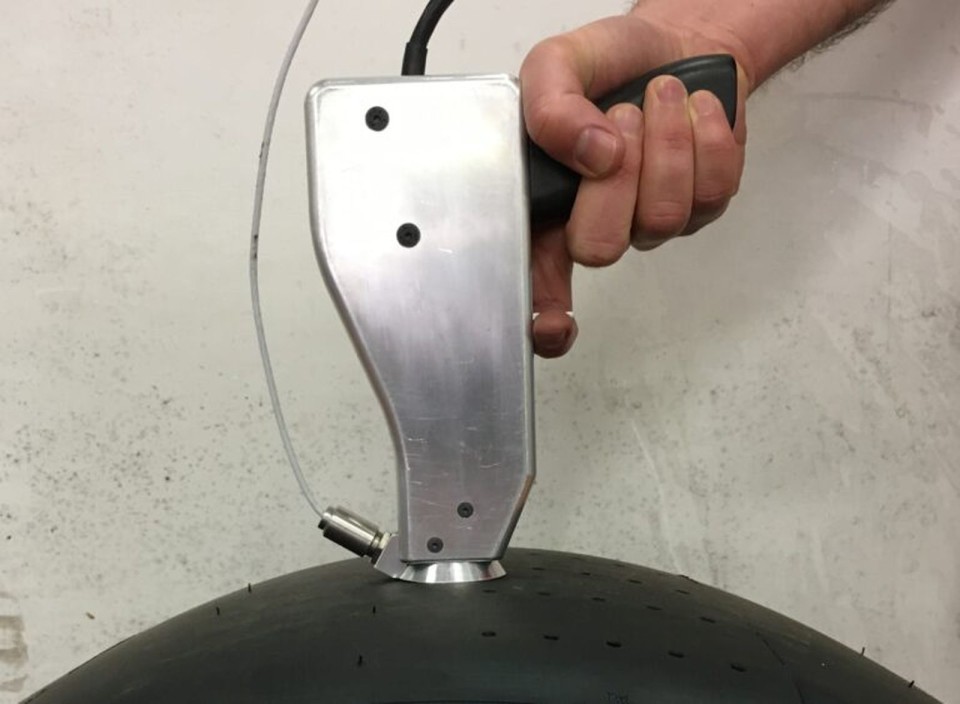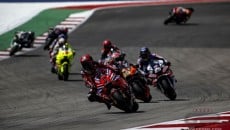In recent Formula 1 pre-season tests in Bahrain, some of the team's technicians were seen using a strange gun-shaped tool on the tires, just before the cars hit the track.
The ‘gun’ was conceived and developed by the Vehicle Dynamics Research Group of the Federico II University of Naples. VESevo is the acronym of Viscoelasticity Evaluation System Evolved, but also derived from the Latin name of the ancient Vesuvius volcano.
Vesevo collects information on the tread to understand the behavior of the tire on the track. With a data post-processing algorithm, the tool allows technicians to analyze the physical properties of the tire. They get better information on internal temperatures, compound stiffness and wear. The data shown on the graphs (analyzed below) are used to understand what impact the tire temperature and the track surface are having on the performance and durability of the tire. This information can help teams choose the correct compound for the race. Although the suppliers, Pirelli in Formula1 and Michelin in MotoGP, provide information on the working range of the tires, it is not uncommon for the real behavior of the tire to be different from expected.
The gun which is actually a hammer
The ergonomics of the gun allows technicians to carry out a large number of tests well and repeatedly, a necessary condition to be able to compare the acquired data. Inside the instrument there is a sliding steel rod preloaded by a spring. The end of the indenter that 'hammers' the rubber is hemispherical in shape; similar to what happens in the Brinnel hardness test. The main difference is that VESevo leaves no permanent imprint on the tread. The shaft is free to bounce after impact so that damping can be neglected. The repeatability of the test is ensured by a sealing / release mechanism capable of positioning the upper plate of the rod always in the same initial position.

The signal of the movement of the rod is acquired through an optical sensor, which is advantageous due to its small size. For each individual test, the tread temperature can also be measured with an infrared pyrometer. The acquisition and subsequent analysis of data through processing algorithms allows technicians to characterize the viscoelastic behavior.
In addition to the patented hardware, the software was also developed internally (in the Lab View environment) by the Research Group. Personalization allows you to 'clean' the raw data from any acquisition anomalies. During the tests of the temperature of the rubber three consecutive acquisitions are carried out at the same temperature in order to have sufficient data for statistical purposes.
Analyzing the two graphs above, you can see a different response of the rod as the temperature changes. In the left one it is observed that at low temperatures both the number of rebounds and the amplitude decrease. The viscoelastic effect of the tread has repercussions with an opposite behavior as the temperature increases. The graph on the right shows, depending on the speed of the shaft, a different slope of the curve before and after the maximum penetration into the tread. The reason is the rebound on a viscoelastic surface which changes the response to stress.
How does a tire that is a viscoelastic material behave?
As just described, knowledge of the viscoelasticity of the compound allows a more accurate description of the asphalt-tire model. This is also useful for making a prediction of the coefficient of friction both in terms of road safety and aimed at performance on the track.
In Motorsport the supply of quota tires does not allow technicians to carry out invasive tests following which the rubber would no longer be usable. VESevo, being a non-destructive tool and immediately usable, broadens the prospects for optimizing vehicle dynamics directly on the racing circuits. The 'hammering' that is inflicted on the tread does not affect the performance of the tire itself.
A viscoelastic material has an intermediate behavior between a purely elastic one, which respects Hooke's law, and a purely viscous one which respects Newton's law on viscosity. This means that the material subjected to stress will deform in function of both time and temperature. The response of the material will be delayed, out of phase with respect to the solicitation. The response analysis relation, which expresses resistance to deformation, is a complex modulus made up of the sum of two factors. The real part, storage modulus, indicates the ability to store energy during stress. The imaginary part, loss modulus, indicates the loss of energy in the form of heat. This provides an important aid on grip prediction and tread wear.
Dynamic mechanical analysis (DMA), which deals with the study of viscoelasticity, however, requires the use of material specimens tested on specific machinery. This application cannot be used on tires as they are destructive tests. VESevo allows technicians to analyze the viscoelastic properties of the material as a function of temperature without having to cut the tires.
An example: three compounds compared
A preliminary index of viscoelastic behavior can be defined, through VESevo, as the variation of the kinetic energy of the stem before and after the first imprint, within the temperature range for each tire tested. Kinetic energy is the energy that a moving body possesses and is proportional to the square of the speed.
Megaride explains that this index was chosen for this preliminary analysis for its physical consistency with the intrinsic concept of dissipation due to viscoelasticity and for its good adaptation to the available reference curves of the loss factor.
In the graph above, the viscoelastic index (the change in kinetic energy) of three tire reference compounds (A, B and C) as a function of temperature together with their adaptation curves. The trends show a good correlation with those of the loss factor, which are normalized for industrial confidentiality (graph below).
There is a peak in correspondence with the glass transition temperature at which the maximum energy loss occurs. Compound C has a higher loss factor peak than the others. Tire B shows a lower glass transition temperature, the curve is shifted to the left with respect to the other two.
Source: megaride.eu; VESevo: An Innovative Device For Non-Destructive Viscoelasticity Characterization - Antonio Maiorano














